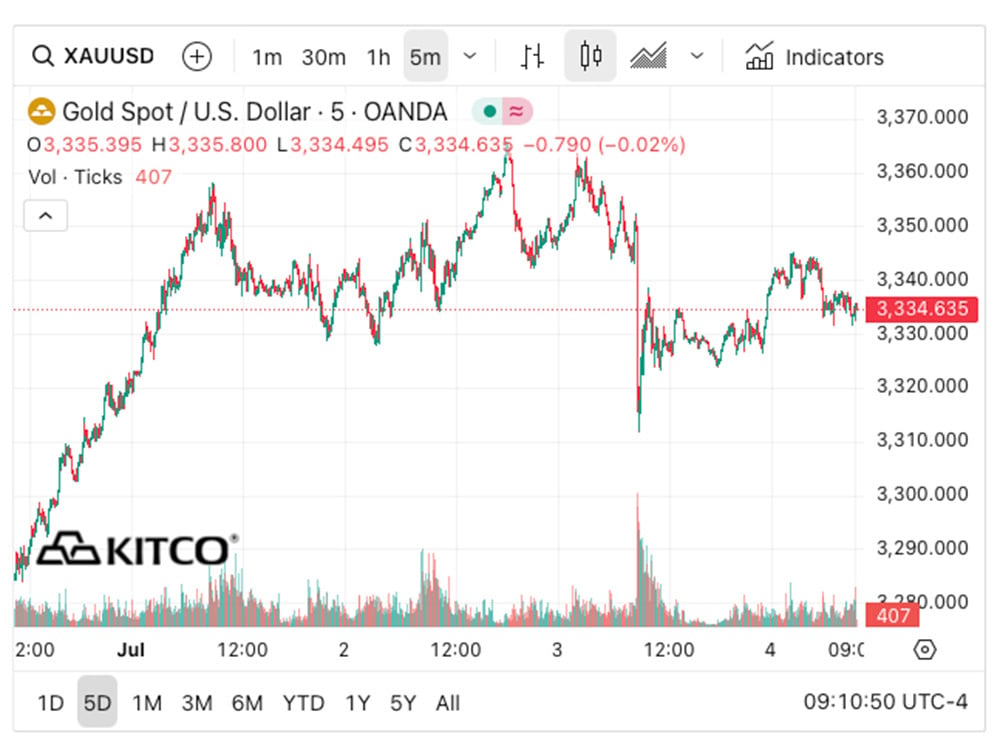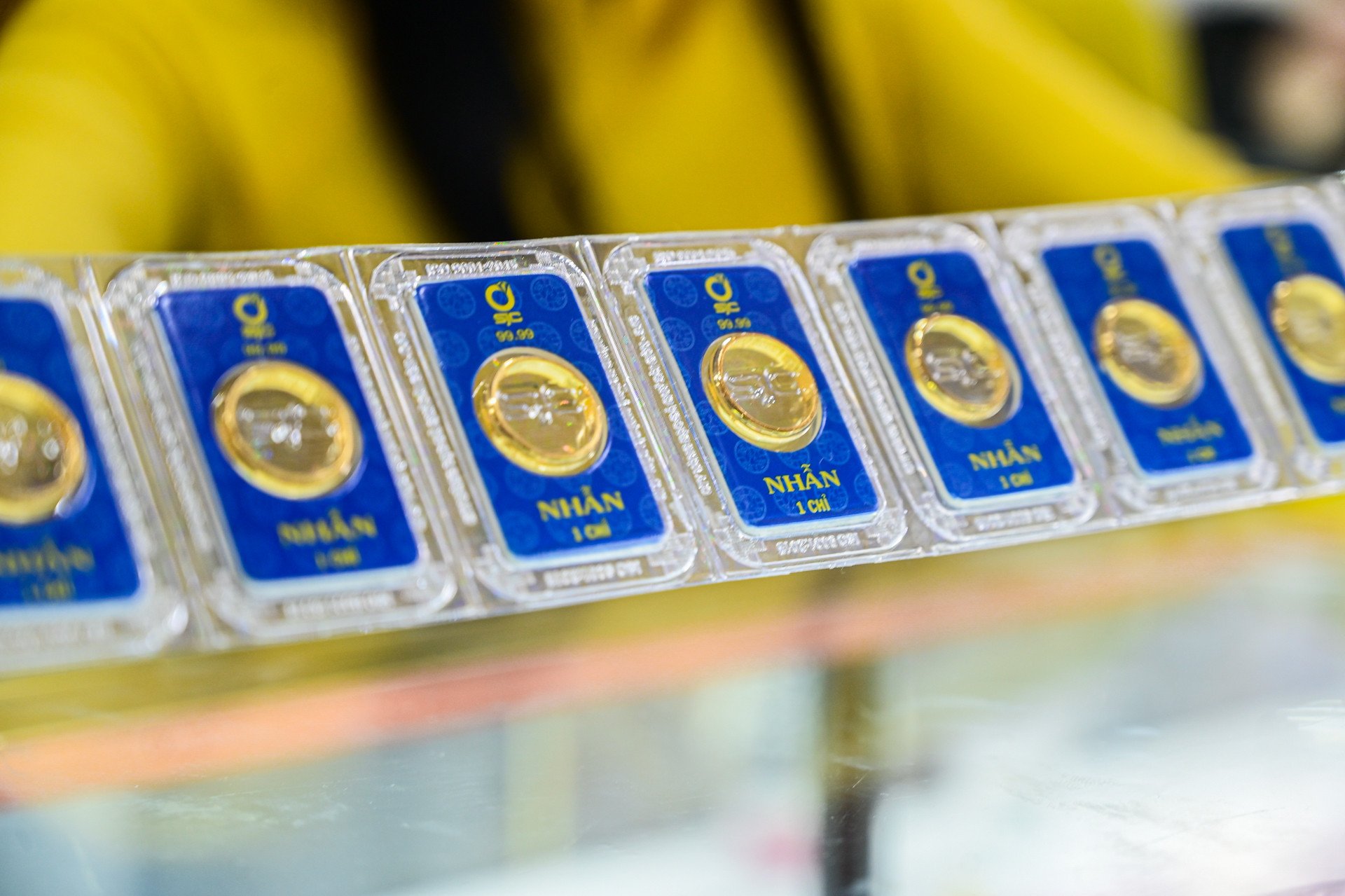End of the week up
Global spot gold prices recorded a volatile week. Despite positive economic data, gold prices continued to rise due to concerns about geopolitical risks and sovereign debt.
Opening the first session of the week at $3,271/ounce, the gold price fell slightly to below $3,250. Then, the gold price increased again, trading around $3,300. By Tuesday morning, the gold price reached $3,356/ounce.
In the next session, spot gold prices hit resistance, trading in the range of $3,330 to $3,355.
By Wednesday, gold prices increased sharply to a weekly high of $3,365/ounce.

Gold prices retested the support level of $3,345 on Thursday. After the US non -farm payrolls report was released, gold prices fell from $3,350/ounce to $3,312.
At the end of the week, the world gold price recovered strongly, reaching 3,337 USD/ounce and maintained trading in a relatively narrow range before the holiday. The gold price recorded an increase of about 2% during the week.
What is the forecast for gold prices in the future?
Colin Cieszynski, chief market strategist at SIA Wealth Management, said the US Federal Reserve (Fed) is in a difficult position, caught between the pressure to cut interest rates due to falling inflation and the risk of rising inflation if it cuts while the economy remains strong. He also emphasized that the recent stability in gold prices is mainly due to the weakness of the US dollar.
In theory, cooling inflation would give the Fed room to cut rates, but with an economy performing strongly, raising rates is often a sensible move to curb inflation, Cieszynski said.
“The Fed is stuck,” Mr. Cieszynski said.

Mr. Cieszynski also pointed out that rate cuts not only affect borrowing costs but also have a “signaling effect.” If the Fed starts cutting rates aggressively, markets and the public could mistakenly think that the economy is entering a recession, even though it is not.
“Cutting interest rates in the face of strong economic growth could be inflationary,” Cieszynski warned, noting that current tariff policies could also be inflationary.
While many investors were disappointed that gold prices could not move higher, Cieszynski said the main reason was the sharp decline in the US dollar, which is the reason why gold prices did not fall significantly.
The market is pricing in about 80 basis points of monetary easing by 2025, which would equate to three rate cuts. That’s entirely possible, he said. Cieszynski doesn’t expect any early rate cuts to have any significant impact on gold or the broader market.
Meanwhile, Edward Meir, an analyst at Marex Consulting, said that new laws related to public spending could put downward pressure on the US dollar in the long term, thereby supporting the rise in gold prices.
The dollar index is on track for its second straight weekly decline this week. A weaker dollar makes gold cheaper for overseas buyers, boosting demand and supporting prices.
Gold prices are likely to continue to weaken after stronger-than-expected US jobs data and rising interest rates curbed the precious metal's recovery, said Marc Chandler, CEO at Bannockburn Global Forex.
Chandler predicts gold prices could return to $3,250 an ounce and possibly even fall lower.
Source: https://vietnamnet.vn/gia-vang-bien-dong-du-doi-du-bao-sap-toi-ra-sao-2418379.html


























































![[Maritime News] Treasury Department Targets Diverse Networks Facilitating Iran's Oil Trade](https://vphoto.vietnam.vn/thumb/402x226/vietnam/resource/IMAGE/2025/7/14/43150a0498234eeb8b127905d27f00b6)









































Comment (0)